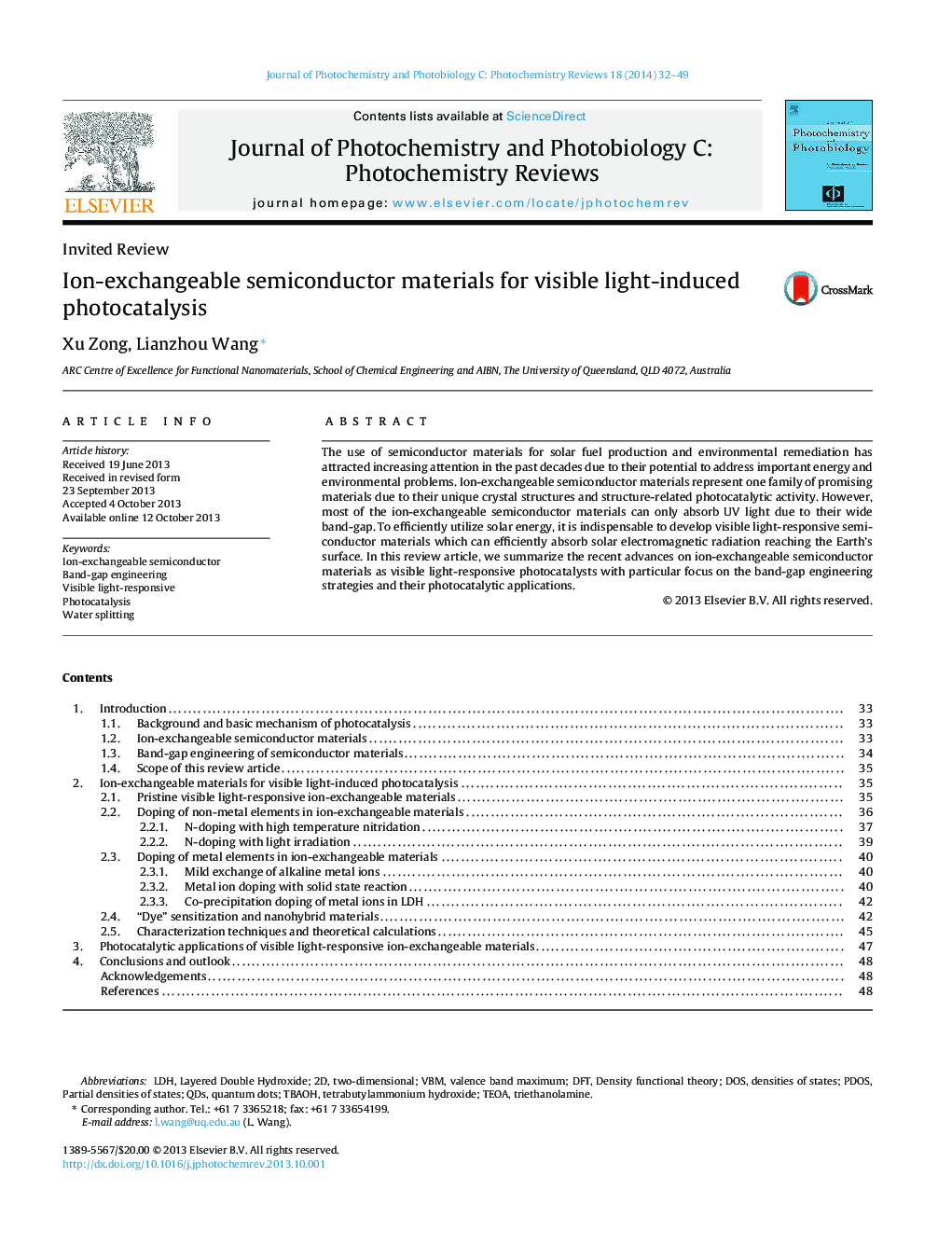| Article ID | Journal | Published Year | Pages | File Type |
|---|---|---|---|---|
| 31442 | Journal of Photochemistry and Photobiology C: Photochemistry Reviews | 2014 | 18 Pages |
•Ion-exchangeable compounds represent one family of promising photocatalytic materials.•Unique crystal structures offer interesting band gap tuning and photocatalytic properties.•Exfoliation-reassembly open opportunities for designing new hybrid photocatalysts and thin films.
The use of semiconductor materials for solar fuel production and environmental remediation has attracted increasing attention in the past decades due to their potential to address important energy and environmental problems. Ion-exchangeable semiconductor materials represent one family of promising materials due to their unique crystal structures and structure-related photocatalytic activity. However, most of the ion-exchangeable semiconductor materials can only absorb UV light due to their wide band-gap. To efficiently utilize solar energy, it is indispensable to develop visible light-responsive semiconductor materials which can efficiently absorb solar electromagnetic radiation reaching the Earth's surface. In this review article, we summarize the recent advances on ion-exchangeable semiconductor materials as visible light-responsive photocatalysts with particular focus on the band-gap engineering strategies and their photocatalytic applications.
Graphical abstractFigure optionsDownload full-size imageDownload as PowerPoint slide
